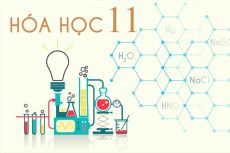Choose the word which is stresses differently from the rest: heavy, major, program, reform
Hãy suy nghĩ và trả lời câu hỏi trước khi xem đáp án
Lời giải:
Báo saiheavy /ˈhevi/
major /ˈmeɪdʒə(r)/
program /ˈprəʊɡræm/
reform /rɪˈfɔːm/
Câu D trọng âm rơi vào âm thứ 2, còn lại rơi vào âm thứ 1
Câu hỏi liên quan
-
Before the 1500’s, the Western plains of North America were dominated by farmers. One group, the Mandans, lived in the upper Missouri River country, primarily in present-day North Dakota. They had large villages of houses built close together. The tight arrangement enabled the Mandans to protect themselves more easily from the attacks of others who might seek to obtain some of the food these highly capable farmers stored from one year to the next.
The women had primary responsibility for the fields. They had to exercise considerable skill to produce the desired results, for their northern location meant fleeting growing seasons. Winter often lingered; autumn could be ushered in by severe frost. During the spring and summer, drought, heat, hail, grasshoppers, and other frustrations might await the wary grower.
Under such conditions, Mandan women had to grow maize capable of weathering adversity. They began as early as it appeared feasible to do so in the spring, clearing the land, using fire to clear stubble from the fields and then planting. From this point until the first green corn could be harvested, the crop required labor and vigilance. Harvesting proceeded in two stages. In August the Mandans picked a smaller amount of the crop before it had matured fully. This green corn was boiled, dried, and shelled, with some of the maize slated for immediate consumption and the rest stored in animal-skin bags. Later in the fall, the people picked the rest of the corn. They saved the best of the harvest for seeds or for trade, with the remainder eaten right away or stored for later use in underground reserves. With appropriate banking of the extra food, the Mandans protected themselves against the disaster of crop failure and accompanying hunger.
The women planted another staple, squash, about the first of June, and harvested it near the time of the green corn harvest. After they picked it, they sliced it, dried it, and strung the slices before they stored them. Once again, they saved the seed from the best of the year`s crop. The Mandans also grew sunflowers and tobacco; the latter was the particular task of the older men.Why does the author believe that the Mandans were skilled farmers?
-
Read the following passage and mark the letter A, B, C or D on your answer sheet to indicate the correct answer to each of the questions:
Public holidays in the United Kingdom, commonly referred to as bank holidays, are days where most businesses and non – essential services are closed although an increasing number of retail businesses (especially the larger ones) do open on some of the public holidays. There are restrictions on trading on Sundays and Christmas Day. Four public holidays are common to all countries of the United Kingdom. These are: New Year's Day, the first Monday in May, Christmas Day, and Boxing Day. Some banks open on some bank holidays. In Scotland, while New Year's Day and Christmas Day are national holidays, other bank holidays are not necessarily public holidays, since the Scots instead observe traditional local customs and practice for their public holidays. In Northern Ireland, once again, bank holidays other than New Year's
Day and Christmas Day are not necessarily public holidays. Good Friday and Christmas Day are common law holidays, except in Scotland, where they are bank holidays. In Scotland the holiday on 1 January (or 2 January if 1 January is Sunday) is statutory, and 25 December is also a statutory holiday (or 26 December if Christmas Day falls on a Sunday). Boxing Day is a holiday traditionally celebrated the day following Christmas Day, when servants and tradesmen would receive gifts, known as a "Christmas box", from their bosses or employers. Today, Boxing Day is the bank holiday that generally takes place on 26 December. And 28 December only is given if Boxing Day is Saturday.
Like Denmark, the United Kingdom has no national day holiday marked or celebrated for its formal founding date. Increasingly, there are calls for public holidays on the patron saints' days in England, Scotland and Wales. An online petition sent to the Prime Minister received 11,000 signatures for a public holiday in Wales on St. David's Day; the Scottish Parliament has passed a bill creating a public holiday on St. Andrew's Day although it must be taken in place of another public holiday; campaigners in England are calling for a bank holiday on St. George's Day; and in Cornwall, there are calls for a public holiday on St. Piran's Day.What does the word “statutory” in paragraph 1 mean?
-
Choose the item among A, B, C or D that best answers the question about the passage:
"In recent years many countries of the world have been with the problem of how to make their workers more productive. Some experts claim the answer is to make jobs more varied. But do more various jobs lead to greater productivity? There is evidence to suggest that while variety certainly makes the workers’ life more enjoyable, it does not actually make him work harder. As far as increasing productivity is concerned, then variety is not an important factor.
Other experts feel that giving the worker freedom to do his job in his own way is important, and there is no doubt that this is true. The problem is that this kind of freedom cannot easily be given in the modern factory with its complicated machinery which must be used very little that can be done to create it.
Another very important consideration is how each worker contributes to the product he is making. In most factories the worker sees only one part of the product. Some car factories are now experimenting with having many small production lines rather than one large one, so that each worker contributes more to the production of the cars on his line, it would seem that not only is degree of the worker contribution an important factor, therefore, but it is also one we can do something about.
To what extent does more money lead to greater productivity? The workers themselves certainly think this is important. But perhaps they want more money only because the work they do is boring. Money just lets them enjoy their spare time more. A similar argument may explain demands for shorter working hours. Perhaps if we succeed in making their jobs more interesting, they will neither want more money, nor will shorter working hours be so important to them."4. In the article, the word “productivity” means ……
-
Read the following passage and mark the letter A, B, C or D on your answer sheet to indicate the correct answer to each of the questions:
For many American university students, the weeklong spring break holiday means on endless party on a sunny beach in Florida or Mexico. In Panama City Beach in Florida, a city with permanent population of around 36.000, more than half a million university students arrive during the month of March to play and party, making it the number one spring break destination in the United States
A weeklong drinking binge is not for everyone, however and a growing number of American university students have found a way to make spring break matter. For them, joining or leading a group of volunteers to travel locally or internationally and work to alleviate problems such as poverty, homelessness, or environmental damage makes spring break a unique learning experience that university students can feel good about.
During one spring break students at James Madison University in Virginia participated in 15 alternative spring break" trips to nearby states, three others to more distant parts of the United States and five international trips. One group of JMU students travelled to Bogalusa, Louisiana to help rebuild homes damaged by Hurricane Katrina. Another group traveled to Mississippi to organize creative activities for children living in homeless shelter. One group of students did go to exhausting physical labor such Florida. but not to lie on the sand. They performed as maintaining hiker rails and destroying invasive plant species that threaten the native Florida ecosystem.
Students who participate in alternative spring break projects find them very rewarding. While most university students have to get their degrees before they can start helping people, students volunteers are able to help people now. On the other hand, the accommodations are far from glamorous. Students often sleep on the floor of a school or church, or spend the week camping in tents. But students only pay around
$250 for meals and transportation, which is much less than some their peers spend to travel to more traditional spring break hotspots
Alternative spring break trips appear to be growing in popularity at universities across the United States. Students cite a number of reasons for participating. Some appreciate the opportunity to socialize and meet new friends. Others want to exercise their beliefs about peoples obligation to serve humanity and make the world a better place. Whatever their reasons, these students have discovered something that gives them rich rewards along with a break from school work.Which of the following is mentioned as a reason for participating in alternative spring break trips?
-
Choose the word or phrase that best fits each space in the following passage
Many people love boats. Going out on the water on a warm summer day is a lot of fun. (1) _______ ,different people like different kinds of boats. Two of the most popular kinds of boat are sailboats and speedboats. Sailboats use the (2) _______to give them power. They only have small engines. In contrast, speedboats have large engines and go very fast. Furthermore, speedboats are usually not as (3) _______ as sailboats. Speedboats are small so that they can go fast. Sailboats, on the other hand, are big so that they are more comfortable. ( 4) _______, sailboats can travel into the ocean, but this would be very dangerous in a speedboat. You can only use speedboats on rivers or lakes.
(4) _______
-
Read the following passage and mark the letter A, B, C or D on your answer sheet to indicate the correct answer to each of the questions:
The ocean bottom - a region nearly 2.5 times greater than the total land area of Earth - is a vast frontier that even today is largely unexplored and uncharted. Until about a century ago, the deep-ocean floor was completely inaccessible, hidden beneath waters averaging over 3,600 meters deep. Totally without light and subjected to intense pressures hundreds of times greater than at the Earth's surface, the deep-ocean bottom is a hostile environment to humans, in some ways as forbidding and remote as the void of outer space.
Although researchers have taken samples of deep-ocean rocks and sediments for over a century, the first detailed global investigation of the ocean bottom did not actually start until 1968, with the beginning ofthe National Science Foundation's Deep Sea Drilling Project (DSDP). Using techniques first developed for the offshore oil and gas industry, the DSDP's drill ship, the Glomar Challenger, was able to maintain a steady position on the ocean's surface and drill in very deep waters, extracting samples of sediments and rock from the ocean floor.
The Glomar Challenger completed 96 voyages in a 15-year research program that ended in November 1983. During this time, the vessel logged 600,000 kilometers and took almost 20,000 core samples of seabed sediments and rocks at 624 drilling sites around the world. The Glomar Challenger's core samples have allowed geologists to reconstruct what the planet looked like hundreds of millions of years ago and to calculate what it will probably look like millions of years in the future. Today, largely on the strength of evidence gathered during the Glomar Challenger's voyages, nearly all earth scientists agree on the theories of plate tectonics and continental drift that explain many of the geological processes that shape the Earth.
The cores of sediment drilled by the Glomar Challenger have also yielded information critical to understanding the world's past climates. Deep-ocean sediments provide a climatic record stretching back hundreds of millions of years, because they are largely isolated from the mechanical erosion and the intense chemical and biological activity that rapidly destroy much land-based evidence of past climates. This record has already provided insights into the patterns and causes of past climatic change - information that may be used to predict future climates.Which of the following is true of the Glomar Challenger?
-
Whales are the largest animals in the world, and the gentlest creatures we know. Although the whale is very huge, it is not hindered at all by its size when it is in the water. Whales have tails that end like flippers. With just a gentle flick, it can propel itself forward. The skin of a whale is so smooth that it does not create any friction that can slow the whale down. A whale’s breathing hole is located on the top of its head, so it can breathe without having to completely push its head out of the water. Whales are protected from the cold seawater by body fat that is called blubber.
Whales live in the ocean but, in terms of behaviours, they are more similar to humans than fish. They live in family groups and they even travel in groups when they have to migrate from cooler to warmer waters. The young stay with their parents for as long as fifteen years. Whales are known not to desert the ill or injured members; instead, they cradle them.
When whales are in danger, there are people who go to great lengths to help them. One such case occurred in 1988, when three young whales were trapped in the sea. It was close to winter and the sea had begun to freeze over. Whales are mammals that require oxygen from the air, so the frozen ice was a great danger to them. All they had then was a tiny hole in the ice for them to breathe through. Volunteers from all over soon turned up to help these creatures. They cut holes in the ice to provide more breathing holes for the whales. These holes would also serve as guides for the whales so that they could swim to warmer waters.Which of the following best describes the main idea of this passage?
-
Read the following passage and mark the letter A, B, C, or D on your answer sheet to indicate the correct answer to each of the questions:
A gesture is an action that sends a message from one person to another without using words. We use gestures to communicate with others. There are some gestures that have completely different meaning depending on when and where they are used.
When an American wants to show that something is OK. or good, he raises his hand and makes a circle with his thumb and foreigners. The circle sign has only one meaning for him. He might be surprised to learn that in other countries it can mean something different. In Japan, for instance, it is the gesture for money. In France, it means 'zero' or 'worthless'. Such differences can lead to all kinds of misunderstanding when foreigners meet. But why is it that the same gesture has so many different meanings?
When some people want to show that something is exact or precise, they make a sign to show that they are holding something between the tips of their thumb and forefinger. Many people from all over the world do this when they want to make a specific point as they are speaking. People later started using this signal to mean 'exactly right' or 'perfect'. This was how the famous OK was bom.
In Japan, money means coins and coins are around. Therefore, making a round hand sign came to represent money. It is simple as that. The French sign for 'nothing' or 'worthless' also has a simple origin. This time the circle doesn't represent a coin, but nought. Nought equals zero, zero equals nothing, nothing equals worthless.What is the difference between gesture and speech.
-
Read the following passage and mark the letter A, B, C or D on your answer sheet to indicate the correct answer to each of the questions:
The ocean bottom - a region nearly 2.5 times greater than the total land area of Earth - is a vast frontier that even today is largely unexplored and uncharted. Until about a century ago, the deep-ocean floor was completely inaccessible, hidden beneath waters averaging over 3,600 meters deep. Totally without light and subjected to intense pressures hundreds of times greater than at the Earth's surface, the deep-ocean bottom is a hostile environment to humans, in some ways as forbidding and remote as the void of outer space.
Although researchers have taken samples of deep-ocean rocks and sediments for over a century, the first detailed global investigation of the ocean bottom did not actually start until 1968, with the beginning ofthe National Science Foundation's Deep Sea Drilling Project (DSDP). Using techniques first developed for the offshore oil and gas industry, the DSDP's drill ship, the Glomar Challenger, was able to maintain a steady position on the ocean's surface and drill in very deep waters, extracting samples of sediments and rock from the ocean floor.
The Glomar Challenger completed 96 voyages in a 15-year research program that ended in November 1983. During this time, the vessel logged 600,000 kilometers and took almost 20,000 core samples of seabed sediments and rocks at 624 drilling sites around the world. The Glomar Challenger's core samples have allowed geologists to reconstruct what the planet looked like hundreds of millions of years ago and to calculate what it will probably look like millions of years in the future. Today, largely on the strength of evidence gathered during the Glomar Challenger's voyages, nearly all earth scientists agree on the theories of plate tectonics and continental drift that explain many of the geological processes that shape the Earth.
The cores of sediment drilled by the Glomar Challenger have also yielded information critical to understanding the world's past climates. Deep-ocean sediments provide a climatic record stretching back hundreds of millions of years, because they are largely isolated from the mechanical erosion and the intense chemical and biological activity that rapidly destroy much land-based evidence of past climates. This record has already provided insights into the patterns and causes of past climatic change - information that may be used to predict future climates.How long did the Glomar Challenger conduct its research?
-
Read the following passage and choose among A, B, C or D the correct answer to each of the questions.
There has been much debate over the past few decades concerning fears that nation will
lead to robots replacing human workers on a massive scale.
The increasing use of robotics, computers and artificial intelligence is a reality, but its full
implications are far from cut and dried. Some forecasts present the future in a utopian way,
claiming that robots will take over the tedious heavy work thus freeing up human time and
potential, allowing for more creativity and innovation, the other end of spectrum are those who
foresee an employment apocalypse, predicting that almost fifty percent of all American jobs
could vanish within the next few decades. Former Microsoft chairman Bill Gates states that in 20
years robots could be in place in a number of job categories, particularly those at lower end of
the scale in terms of skills. The bottom line is that while the future is always uncertain, robots are a fixture of our society, which is not going to disappear. As with the Industrial Revolution, where machines were utilized in many tasks in place of manual laborers and social upheaval followed, the Digital Revolution is likely to place robots in various jobs. In spite of that, many of today's jobs were not in existence before the Industrial Revolution, such as those of programmers, engineers and data scientists. This leads other experts to criticize this alarmist approach of robot scare-mongering, which is invariably compared to the 19th -century "Luddites". This group was textile workers who feared being displaced by machines and resorted to violence, burning down factories and destroying industrial equipment - their rejection of inevitable progress has come to symbolize mindless ignorance.
Needless to say, exactly what new kinds of jobs might exist in the future is difficult to envision at present. Therefore, the crux of the issue is not whether jobs will be lost, but whether the creation of new vacancies will outpace the ever-increasing number of losses and what skills will be required in the future.
It is clearly not all doom and gloom, as demand for employees with skills in data analysis, coding, computer science, artificial intelligence and human-machine interface is rising and will continue to do so. Furthermore, the demand for skills in Jobs where humans surpass computers, such as those involving care, creativity and innovative craftmanship, are likely to increase considerably. Ultimately, the key lies in the adaptation of the workforces, through appropriate education and training, to keep pace with our world's technological progress.
What is the main concern associated with technological advances in the workplace?
-
Fill in each numbered blank with one suitable word or phrase.
In 1986 Vietnam (1)_____ a political and economic innovation campaign (Doi Moi) that introduced reforms intended to facilitate the transition from a centralized economy to a “socialist-oriented market economy”. Doi Moi combined government planning with free-market incentives. The program abolished agricultural (2) _____, removed price controls on agricultural goods, and enabled farmers to sell their goods in the marketplace. It encouraged the establishment of private businesses and foreign investment, including foreign-owned (3) _____.
By the late 1990s, the success of the business and agricultural (4) _____ ushered in under Doi Moi was evident. More than 30,000 private businesses had been (5) _____, and the economy was growing at an annual rate of more than 7 percent. From the early 1990s to 2005, poverty (6) _____ from about 50 percent to 29 percent of the population. However, progress varied geographically, with most prosperity concentrated in urban areas, (7) _____ in and around Ho Chi Minh City. In general, rural areas also made progress, as rural households (8) _____ in poverty declined from 66 percent of the total in 1993 to 36 percent in 2002. (9) _____ contrast, concentrations of poverty remained in (10) _____ rural areas, particularly the northwest, north-central coast, and central highlands. Government control of the economy and a nonconvertible currency have protected Vietnam from what could have been a more severe impact resulting from the East Asian financial crisis in 1997.
(8)_____
-
Read the following passage and mark the letter A, B, C, or D on your answer sheet to indicate the correct answer to each of the questions:
“They told me I could never walk again. But when I listened to music, I forgot all about the pain. I found the strength I didn’t know I had.”Ninety-two-year-old Tina Goodman, who regained her ability to walk, thanks to music.
This is just one of the many stories in Fettaro’s book “The Healing Power of Music” . Fettaro tries to show just how important music is in our lives and how it can help us to be healthy and happy.
According to Fettaro, music can make sick people again. In fact, his book comes with a CD of recordings, each one specially designed to help with a number of health problems.
Fettaro, e well-known music therapist, promises that by reading his book, you will be able to develop the healing power of music in your life. He says this will help you fight headaches and back pain, as well as reduce stress, high blood pressure, and many other common illnesses.
Certainly, I accept that listening to certain types of music can help with particular problems, such as stress. I am also comfortable with Fettaro’s claim that by reading his book, you’ll be able to create a peaceful enviroment to help you relax in your home. I found the relaxation and breathing techniques very useful. Similarly his claim that music help you sleep better seems reasonable. Yet when he goes on to promise his music therapies will help cure depression and even cancer, he begins to sound a little bit unbelievable.
Nevertheless, for those of you who are interested in the power of music to heal, this is a great book to buy. It’s a thorough introduction to the history and practice of music therapy. Fettaro writes in a simple, easy to understand way and shows clearly how music can affect us positively. His basic message-that music can improve our lives-is well-presented and clear. It may even be true that certain techniques covered here can help some people recover from unpleasant health problems. However, his promises of “amazing results” seem impossible to justify.Which statement is not true?
-
Read the following passage and mark the letter A, B, C, or D on your answer sheet to indicate the correct answer to each of the questions:
Theresa May, the second female Britain’s prime minister following Margaret Thatcher, revealed in 2013 that she had been given a diagnosis of Type 1 diabetes, a condition that requires daily insulin injections. Asked later how she felt about the diagnosis, she said her approach to it was the same as toward everything in her life: “Just get on and deal with it.” That kind of steeliness brought her to center stage in the aftermath of Britain’s vote to leave the European Union and the feuding that erupted in the Conservative Party over who would succeed David Cameron.
Ms” May, 59 years old, is the country’s longest-serving home secretary in half a century, with a reputation for seriousness, hard work and above all, determination. She is one of a growing number of women in traditionally male-dominated British politics rising to the upper position of leadership.
Bom in 1956, Ms. May grew up mainly in Oxford shire, an only child who was first drawn to the Conservative Party at age 12. As a conscientious student, she never rebelled against her religious upbringing and remains a regular churchgoer. Tellingly, her sports hero was Geoffrey Boycott, a solid, stubborn cricketer who specialized in playing the long game.
Like many other Britain’s prime minister including Tony Blair, Sir Robert Peel and Margaret Thatcher, she won a place at Oxford. But while almost every other political leader got there by way of Eton College and joined Oxford’s hedonistic Bullingdon Club, she attended a state secondary school and had a more sedate university career. After unsuccessful attempts to be elected to the House of Commons in 1992 and 1994, she finally became an MP in 1997 general election.
May is known for a love of fashion and in particular distinctive shoes. She even wore leopard-print shoes to her final Cabinet meeting as Home Secretary in early 2016. However, she has been quite critical of the media focusing on her fashion instead of her achievement as a politician. May also describes cooking and walking as primary hobbies, and if someone is raising questions about why walking can be classified as a hobby, she elaborates in a column for Balance magazine, in which she wrote of her battle with diabetes.Which of the following facts is TRUE about Theresa May?
-
Read the following passage and mark the letter A, B, C, or D on your answer sheet to indicate the correct answer to each of the questions:
Thirty years ago, Lake Ponkapog in Hartwell, New Jersey, was full of life. Many birds and animals lived beside the water, which was full of fish. Now there are few birds, animals, and fish. The lake water is polluted. It is a dirty brown colour, and it is filled with strange plants.
How did this happen? First, we must think about how water gets into Lake Ponkapog. When it rains, water comes into the lake from all around. In the past, there were woods all around Lake Ponkapog, so the rainwater was clean.
Now there are many homes on the lake hore. People often use the chemicals in their gardens. They use other chemicals inside their houses for cleaning and killing insects. There are also many businesses. Businesses use chemicals in their machines or stores. Other chemicals fall onto the ground from cars or trucks. When it rains, the rainwater flows by these homes and businesses. It picks up all the chemicals and then pours them into the lake. They pollute the water and kill the animal life.
There is still another problem at the lake: exotic plants. These plants come from other countries. They have no natural enemies here, and they grow very quickly. In a short time, they can fill up a lake. Then there is no room for other plants. The plants that normally grow there die. These plants gave many animals and fish their foods or their homes. So now those animals and fish die, too.
People in Hartwell are worried. They love their lake and want to save it. Will it be possible? A clean lake must have clean rainwater going into it. Clean rainwater is possible only if people are more careful about chemicals at home and at work. They must also be more careful about gas and oil and other chemicals on the ground.The phrase “fill up” in the passage probably means .
-
Read the following passage and mark the letter A, B, C, or D on your answer sheet to indicate the correct answer to each of the questions:
Vitamins, taken in tiny doses, are a major group of organic compounds that regulate the mechanisms by which the body converts food into energy. They should not be confused with minerals, which are inorganic in their makeup. Although in general the naming of vitamins followed the alphabetical order of their identification, the nomenclature of individual substances may appear to be somewhat random and disorganized. Among the 13 vitamins known today, five are produced in the body. Because the body produces sufficient quantities of some but not all vitamins, they must be supplemented in the daily diet. Although each vitamin has its specific designation and cannot be replaced by another compound, a lack of one vitamin can interfere with the processing of another. When a lack of even one vitamin in a diet is continual, a vitamin deficiency may result.
The best way for an individual to ensure a necessary supply of vitamins is to maintain a balanced diet that includes a variety of foods and provides adequate quantities of all the compounds. Some people take vitamin supplements, predominantly in the form of tablets. The vitamins in such supplements are equivalent to those in food, but an adult who maintains a balanced diet does not need a daily supplement. The ingestion of supplements is recommended only to correct an existing deficiency due to unbalanced diet, to provide vitamins known to be lacking in a restricted diet, or to act as a therapeutic measure in medical treatment. Specifically, caution must be exercised with fat-soluble substances, such as vitamins A and D, because, taken in gigantic doses, they may present a serious health hazard over a period of time.How many vitamins must be derived from nourishment?
-
Choose the item among A, B, C or D that best answers the question about the passage:
"When Franklin Roosevelt was elected President of the United States in 1932. not only the United States but also the rest of the world was in the throes of an economic depression. Following the termination of World War I, Britain and the United States at first experienced a boom in industry. Called the Roaring Twenties, the 1920s ushered in a number of things - prosperity, greater equality for women in the work world, rising consumption, and easy credit. The Outlook for American business was rosy.
October 1929 was a month that had catastrophic economic reverberation worldwide. The American stock market witnessed the “Great Crash,” as it is called, and the temporary boom in the American economy came to a standstill. Stock prices sank, and panic spread. The ensuing unemployment figure soared to 12 million by 1932.
Roosevelt was elected because he promised a “New Deal” to lift the United States out of the doldrums of the depression. Following the principles advocated to Keynes, a British economist, Roosevelt mustered the spending capacities of the federal government to provide welfare, work, and agricultural aid to the millions of down-and-out Americans. Roosevelt succeeded in dragging the nation out of the Depression before the outbreak of World War II."5. Roosevelt’s “New Deal” advocated ……. .
-
Read the following passage and mark the letter A, B, C, or D on your answer sheet to indicate the correct answer to each of the questions.
Before the mid-nineteenth century, people in the United States ate most foods only in season. Drying, smoking and salting could preserve meat for a short time, but the availability of fresh meat, like that of fresh milk, was very limited; there was no way to prevent spoilage. But in 1810, a French inventor named Nicolas Appert developed the cooking-and-sealing process of canning. And in the 1850’s an American named Gail Borden developed a means of condensing and preserving milk. Canned goods and condensed milk became more common during the 1860’s, but supplies remained low because cans had to be made by hand. By 1880, however, inventors had fashioned stamping and soldering machines that massproduced cans from tinplate. Suddenly all kinds of food could be preserved and bought at all times of the year.
Other trends and inventions had also helped make it possible for Americans to vary their daily diets. Growing urban population created demand that encouraged fruit and vegetable farmers to raise more produce. Railroad refrigerator cars enabled growers and meat packers to ship perishables great distances and to preserve them for longer periods. Thus, by the 1890’s, northern city dwellers could enjoy southern and western strawberries, grapes, and tomatoes, previously available for a month at most, for up to six months of the year. In addition, increased use of iceboxes enabled families to store perishables. As easy means of producing ice commercially had been invented in the 1870’s, and by 1900 the nation had more than two thousand commercial ice plants, most of which made home deliveries. The icebox became afixture in most homes and remained so until the mechanized refrigerator replaced it in the 1920’s and 1930’s.
Almost everyone now had a more diversified diet. Some people continued to eat mainly foods that were heavily in starches or carbohydrates, and not everyone could afford meat. Nevertheless, many families could take advantage of previously unavailable fruits, vegetables, and dairy products to achieve more varied fare.
During the 1860’s, canned food products were _________ .
-
Choose the best answer:
Hurricane Dorian was the strongest hurricane on record to (1)...........the Bahamas, and is regarded as the worst natural disaster in the country’s history. On 1 September 2019, Dorian hit the Abaco Islands with sustained winds (2)............... 185 mph (295 km/h). It made landfall as a (3)................ 5 hurricane on Elbow Cay, just east of Great Abaco Island, and went on to strike Grand Bahama at similar intensity, stalling just north of the territory with unrelenting winds for at least 24 hours. Damage in the Bahamas was (4)................ due to the prolonged and intense storm conditions, including heavy rainfall, high winds and storm surge with thousands of homes destroyed, 70,000 people (5)................ homeless, and at least 58 deaths recorded. As of September 28, 600 people still remain missing. Dorian is (6).............. the costliest disaster in Bahamian history, estimated to have left behind an exceptional $7 billion in property damage.(7)................ its ravages through the Bahamas, Dorian proceeded along the coasts of the Southeastern United States and Atlantic Canada, leaving behind considerable damage and economic (8).............. in those regions.1.
-
Increasing numbers of parents in the U.S. are choosing to teach their children at home. In fact, the U.S. Department of Education has estimated that in 1999, about 850,000 children were being homeschooled. Some educational experts say that the real number is double this estimate, and the ranks of homeschooled children seem to be growing at the average rate of about eleven percent every year.
At one time, there was a theory accounting for homeschooling: it was traditionally used for students who could not attend school because of behavioral or learning difficulties. Today, however, more parents are taking on the responsibility of educating their own children at home due to their dissatisfaction with the educational system. Many parents are unhappy about class size, as well as problems inside the classroom. Teacher shortages and lack of funding mean that, in many schools, one teacher is responsible for thirty or forty students. The children are, therefore, deprived of the attention they need. Escalating classroom violence has also motivated some parents to remove their children from school.
Although there have been a lot of arguments for and against it, homeschooling in the U.S. has become a multi-million dollar industry, and it is growing bigger and bigger. There are now plenty of websites, support groups, and conventions that help parents protect their rights and enable them to learn more about educating their children. Though once it was the only choice for troubled children, homeschooling today is an accepted alternative to an educational system that many believe is failing.More parents teach their children because they completely ........... the current educational system.














